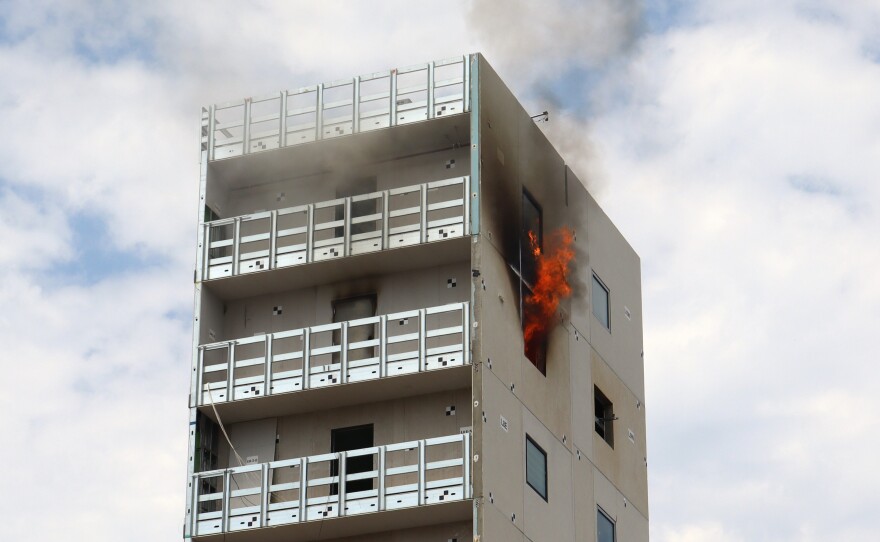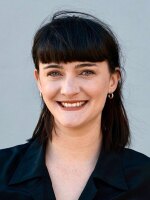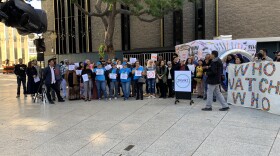Smoke billowed out of a steel-framed building off Pomerado Road Thursday morning. It was part of research by UC San Diego and California Polytechnic State University on how fire spreads through earthquake-damaged steel buildings.
Fire spreads more easily after an earthquake damages drywall, said UC San Diego structural engineering professor Tara Hutchinson.
“We see separation, we see tearing and crushing,” she said. “All of that is a path for temperatures to cross into the cavity and then into other spaces. And if you're in the other space — obviously — your livelihood, your protection is compromised.”
The building the researchers are studying is made of cold-formed steel. It’s a strong, lightweight, recycled material. Currently, U.S. building code limits buildings made of cold-formed steel to six stories.
The researchers are testing the earthquake safety of a 10-story building. These tests could help determine whether the six-story height limit could safely increase, potentially making construction faster and less expensive, according to UC San Diego.

The building sits on a shake table that allows them to simulate earthquakes. Last month, they tested how it would reacted during a 6.9 magnitude quake. Thursday’s test measured the spread of smoke, heat and fire in the building’s ninth story.
“We have drones in the air that are trying to capture surface temperature, wind information, even particulate information,” Hutchinson said.
Firefighters with Cal Fire stood by during the test to make sure the fire stayed under control. They didn’t have to enter this building, but earthquake damage can add to firefighters’ safety risk, said Captain Thomas Shoots.
“Any kind of weakened structure is going to be a challenge for us,” he said. “It's really that risk versus gain at that point, trying to figure out what we can do just to help the situation without hurting or injuring our firefighters.”
Researchers plan to conduct a fire test on the sixth story in the coming weeks.






